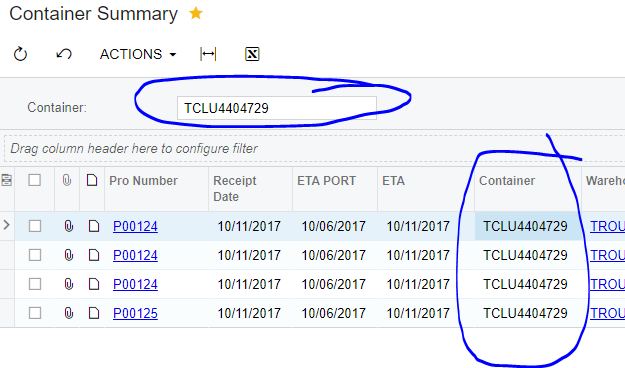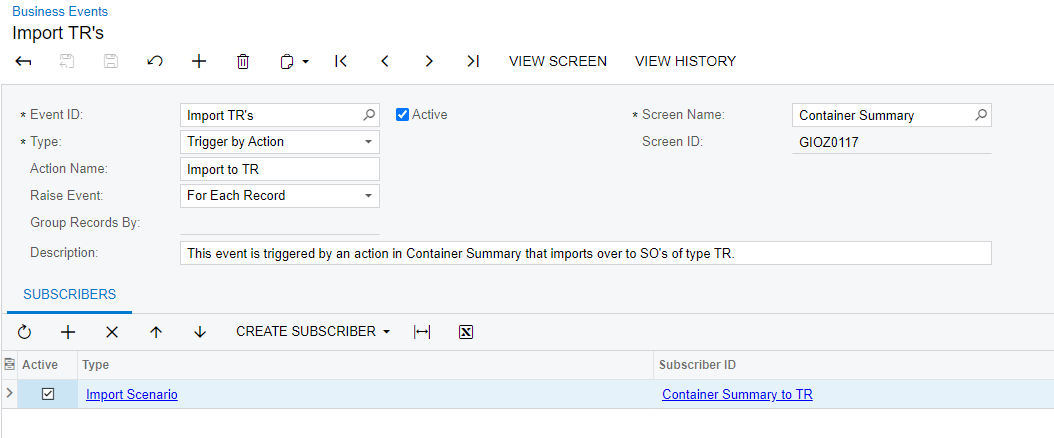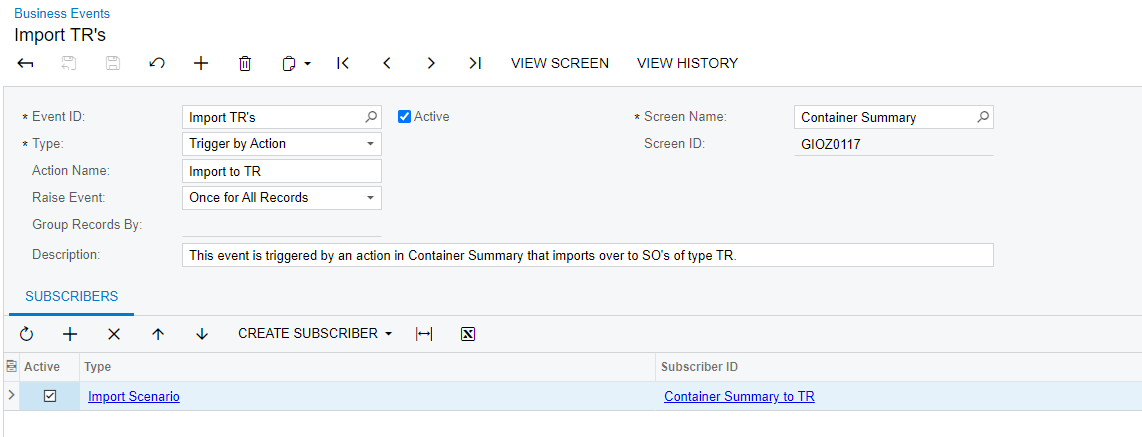I had previously asked how to use workflows to create an import from an inquiry. I now have that working, except instead of importing the rows as line items into one document, each row is making it’s own document with a single line item.
I tried to Google the solution, but the solution says to set the order number as a static value that will be converted by the system to the auto-number. This value needs to be the same for all the rows. My inquiry is driven by a container number. All the rows have that value and it will be exactly the same. So in my import, my order number is the container number. The output files are auto-numbered, but should only be one document, not 5 or 6 documents with a single line.
I have attached my import scenario here for ease of use. Also below is a link to the previous discussion.








